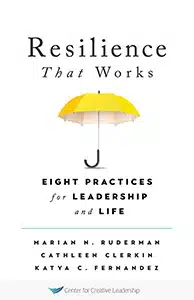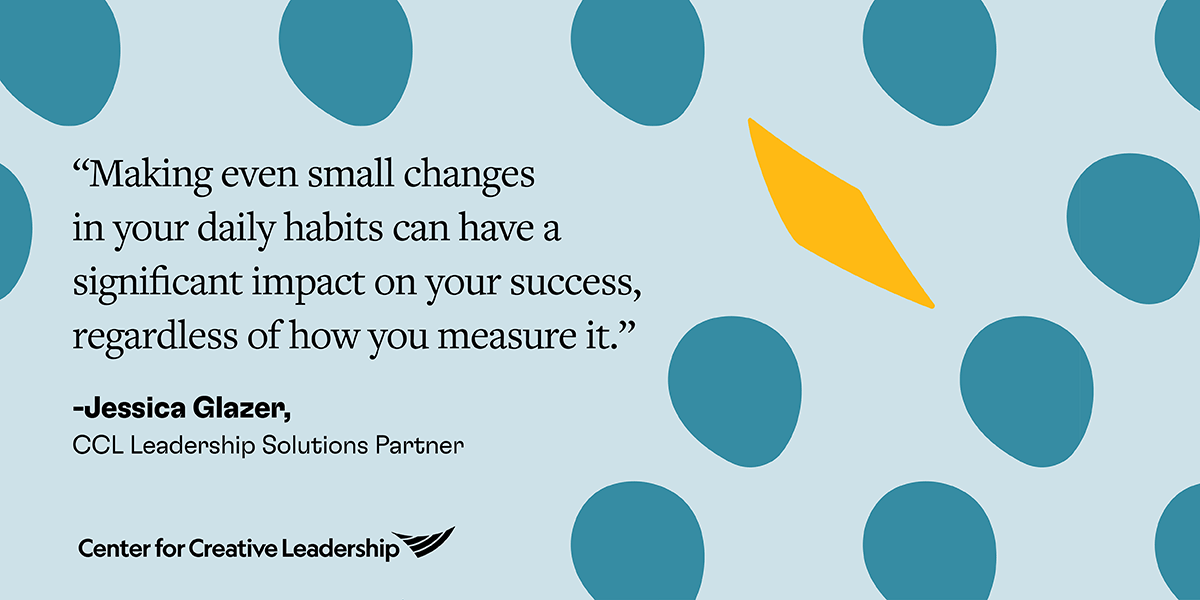From our approach to work to our interactions with friends and family, the pandemic and its aftermath have influenced nearly everything in the past few years.
This onslaught of information — coming from all directions — has an impact on our health. We have been dealing with a lot of uncertainty and anxiety, and for some of us, that anxiety comes in waves. For others, it’s more like a steady drip into our sanity bucket — and we know it’s just a matter of time before that bucket overflows.
Employee enthusiasm, cooperation, morale, and creativity are all jeopardized in times of stress, making it all the more difficult to run the business or organization. It’s more difficult than ever to make time for wellness.
Wellness Can Help You Achieve Success (And Attain Your Full Leadership Potential)
For years, many positive psychology experts have issued the warning: “If you don’t make time for wellness, you will never be successful.”
It’s a serious message — and it’s as true now as ever.
As leaders, we are called to be strategic. We’re responsible for setting direction, getting alignment, and inspiring commitment from our people.
That’s a tall order, and it requires more than just our physical presence — whether we’re working from home or from the office. As we rise to the challenge of living and leading in an uncertain world, we must take care of our mental health and make time for wellness so that we are able to attain our full potential, both personally and professionally. This is a key part of living with intention, at work and at home.
By whatever measure we choose — career trajectory, paycheck size, a happy family — we often gauge our own success. And while you may be successful by most accounts — including your own — you may still be falling short of reaching your full leadership potential, because “success” doesn’t necessarily correlate with achieving your true potential.
By not addressing that, we run the risk of leaving a whole lot of potential on the table.
So, how do you access your full leadership potential?
It’s easier than you might think: “Making even small changes in your daily habits can have a significant impact on your wellness, which will directly contribute to your success, regardless of how you measure it,” notes Jessica Glazer, one of our senior leadership solutions partners.
These changes needn’t be major life overhauls. At CCL, we teach that making even small adjustments helps you make time for wellness, which will pay off in all areas of your life, helping you to come closer to reaching your true potential as a leader.
How to Make Time for Wellness: 4 Proven Positive Psychology Techniques
Wellness Tips to Help You Achieve Your Full Leadership Potential
Here are 4 wellness techniques that have been scientifically proven to decrease your stress and increase your resilience, wellbeing, and leadership:
- Increase your sleep, both in terms of quality and quantity.
- Increase your movement with exercise throughout the day.
- Develop your mindfulness skills (via various meditation techniques).
- Foster a culture of gratitude both at work, and at home.
Making headway in any of these 4 areas requires no more than 20 minutes a day — and often, as few as 3 minutes will do the trick. These small steps will improve your resilience and therefore help move you closer to accessing your untapped leadership potential.
By increasing in each of these 4 areas — sleep, movement, mindfulness, and gratitude — even if only minutes per day, you will make time for wellness, when time is at a premium.

Dive deeper into 8 evidence-based practices that keep you healthy, focused, and functioning with our book, Resilience That Works: Eight Practices for Leadership and Life, “a practical guide for gaining and maintaining strength through the trials and tribulations of leading and living.”
-Adam Grant, #1 New York Times bestselling author
1. Increase your sleep.
Time commitment: As little as 20 minutes a day
Research shows that you lose one IQ point for every lost hour of sleep. Go to bed just 20 minutes earlier. Or, catch up by taking a quick nap during the day, and reap the added benefit of increasing both your alertness and productivity levels for the afternoon. Consider a short nap after lunch or before dinnertime with your family. Your partner, friends, or children deserve your attention, and it can be hard to focus if you’re nodding off.
If naps won’t work, set your alarm to wake you at the time you’ll actually need to get up. Hitting the snooze button may make you feel like you’re sneaking in a few extra minutes of rest, but you’d be better off letting your alarm go off 20 minutes later and getting up after an extra bit of restorative sleep. Being tired at work is a roadblock for leaders.
2. Increase your movement.
Time commitment: 5 minutes a day
If you’re not currently able to fit exercise into your busy schedule, don’t feel you must jump headfirst into a CrossFit membership. Because exercise and leadership are closely linked, any movement is better than none. Just taking a 5-minute break to stretch or take a super-quick walk can have immediate positive effects on your stress levels, creativity, and productivity.
These effects are even greater if you get that walk in outdoors, around some trees or greenery. Aim to make time for wellness by increasing your movement just a little each day, and don’t forget to notice the exercise that you’re actually getting, but may be ignoring.
Access Our Webinar!
Watch our webinar, How Leaders Can Foster a Culture of Learning & Wellbeing, to learn more about how leaders have the power and responsibility to foster work environments that support their teams in creating space for learning and making time for wellness.
3. Increase your mindfulness.
Time commitment: 1 minute a day
Put a meditation app like Calm or Headspace in the spot on your smartphone where your most commonly used social media app usually sits. You’ll be surprised, both by how mindlessly you open up the app without a thought, and by how easily you can fill the few minutes you might’ve spent scrolling with a grounding meditation instead.
You may like a short, guided recording, or you may prefer the timed sessions that just play background music — try a few and figure out what works best for you. A recent favorite of ours is Calm’s breathing meditation, which rings a chime as an indication to inhale, a chime to hold your breath for a count of 2, and a chime to exhale. It’s simple and effective, and best of all: You can use it for a little as 60 seconds to help re-center yourself whenever you need to hit reset.
Mindfulness practices can boost your leadership skills, so getting into the practice of centering yourself — and becoming more mindful of your emotions and environment — will benefit you in a multitude of ways. Don’t be surprised if you find yourself more aware of the needs of your colleagues and family, or if you’re less rattled by the constant change we all confront each day. Being mindful helps us to notice more things, both internally and externally, and thus navigate through our days more effectively.
4. Increase your gratitude.
Time commitment: 3 minutes a day
Keep a gratitude journal. Use a book, use your phone, or use one of the many apps that offer this service, but don’t miss the opportunity to reframe your long-term mindset. Writing down even 3 good things every day will quickly train your brain to look for positives throughout your day. This will pay off both personally and professionally, as your happiness boost will be noticed in and out of the office.
If you want to spread the benefits and encourage gratitude in the workplace, you may wish to extend your thanks to others at work to help your team members feel appreciated, engaged, and supported.
Want to make this a daily practice? Once a week — perhaps first thing on Monday or last thing on Friday — spend no more than 3 minutes writing a quick gratitude letter to someone in your life. This can be handwritten or sent via email, but try following our widely recognized SBI™ feedback model to make it quick, easy, specific, and impactful:
- Share the Situation. (This morning, just before our weekly call …)
- Describe the Behavior you observed. (… when you agreed to accommodate my last-minute request to reschedule …)
- Depict the Impact on you. (… I felt supported and grateful. I’m so glad to get to work with you.)
Sign it, send it off, and you’ve not only benefited from gratitude, but you’ve made someone else’s day better, too.
A Closing Word On Reaching Your Leadership Potential
So, remember these 4 tips from positive psychology to carve out time for wellness and help you boost your resilience levels. When you make time for wellness, you’re equipped to seize all the possibilities that await, and truly achieve your maximum potential as a leader — and as a person.
Ready to Take the Next Step?
Help your team make time for wellness and develop habits that support their own resilience, increasing their ability to reach their full leadership potential. Our evidence-based resilience training will help your leaders avoid burnout — and burn bright instead.










